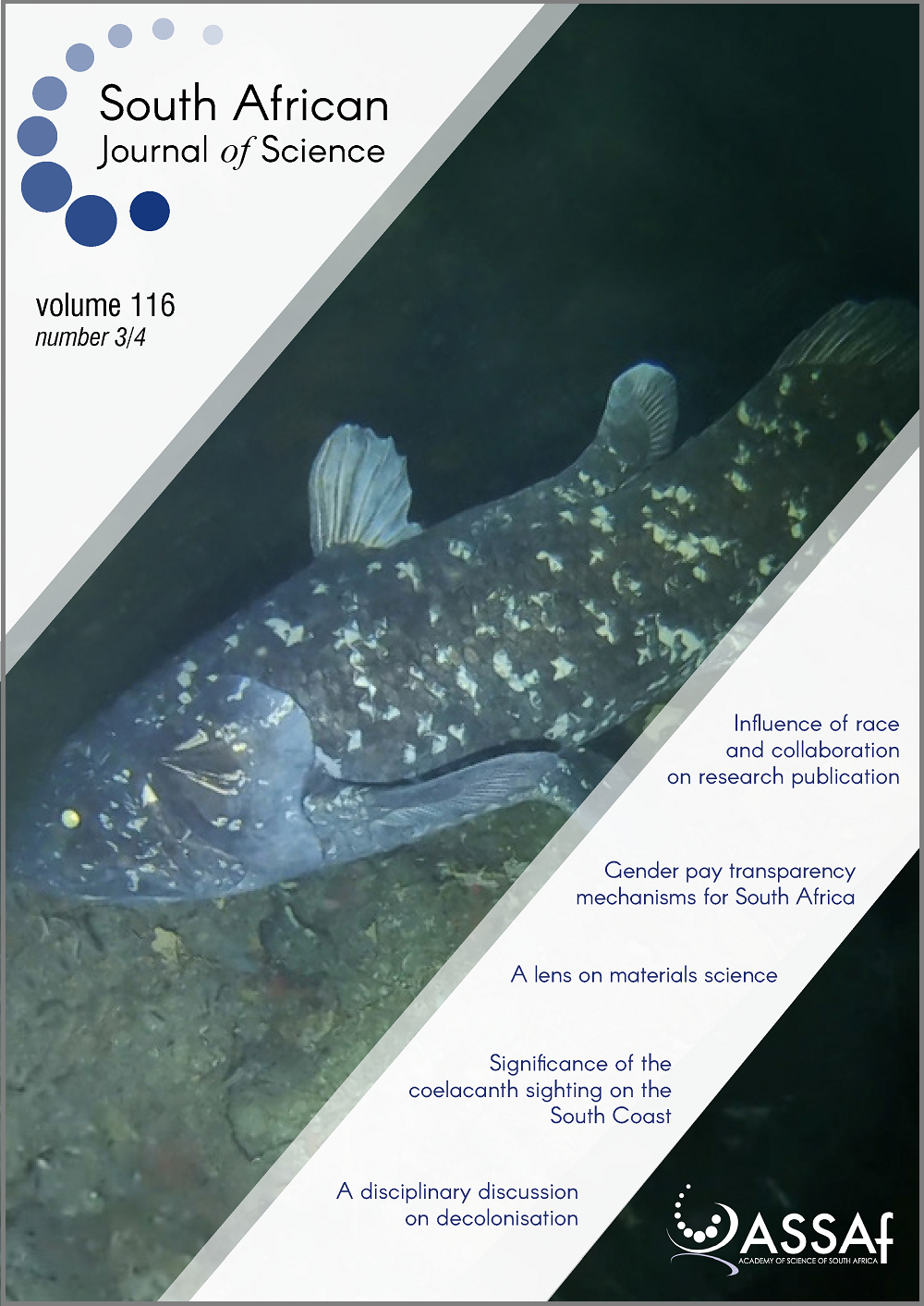Observation and quantification of aerosol outflow from southern Africa using spaceborne lidar
DOI:
https://doi.org/10.17159/sajs.2020/6398Keywords:
lidar, aerosols, aerosol transport, biomass burningAbstract
Biomass burning in Africa provides a prolific source of aerosols that are transported from the source region to distant areas, as far away as South America and Australia. Models have long predicted the primary outflow and transport routes. Over time, field studies have validated the basic production and dynamics that underlie these transport patterns. In more recent years, the advancement of spaceborne active remote-sensing techniques has allowed for more detailed verification of the models and, importantly, verification of the vertical distribution of the aerosols in the transport regions, particularly with respect to westerly transport over the Atlantic Ocean. The Cloud-Aerosol Transport System (CATS) lidar on the International Space Station has detection sensitivity that provides observations that support long-held theories of aerosol transport from the African subcontinent over the remote Indian Ocean and as far downstream as Australia.
Significance:
- Biomass burning in Africa can have impacts as far away as Australia.
- Flow of aerosols from Africa towards Australia has long been postulated by transport models, but has been poorly characterised due to a lack of measurements.
- The CATS instrument on the International Space Station has detection sensitivity that captures aerosol transport from Africa over the Indian Ocean to Australia.
Open data set:
Published
Issue
Section
License

All articles are published under a Creative Commons Attribution 4.0 International Licence
Copyright is retained by the authors. Readers are welcome to reproduce, share and adapt the content without permission provided the source is attributed.
Disclaimer: The publisher and editors accept no responsibility for statements made by the authors
How to Cite
- Abstract 1417
- PDF 773
- EPUB 248
- XML 470












.png)